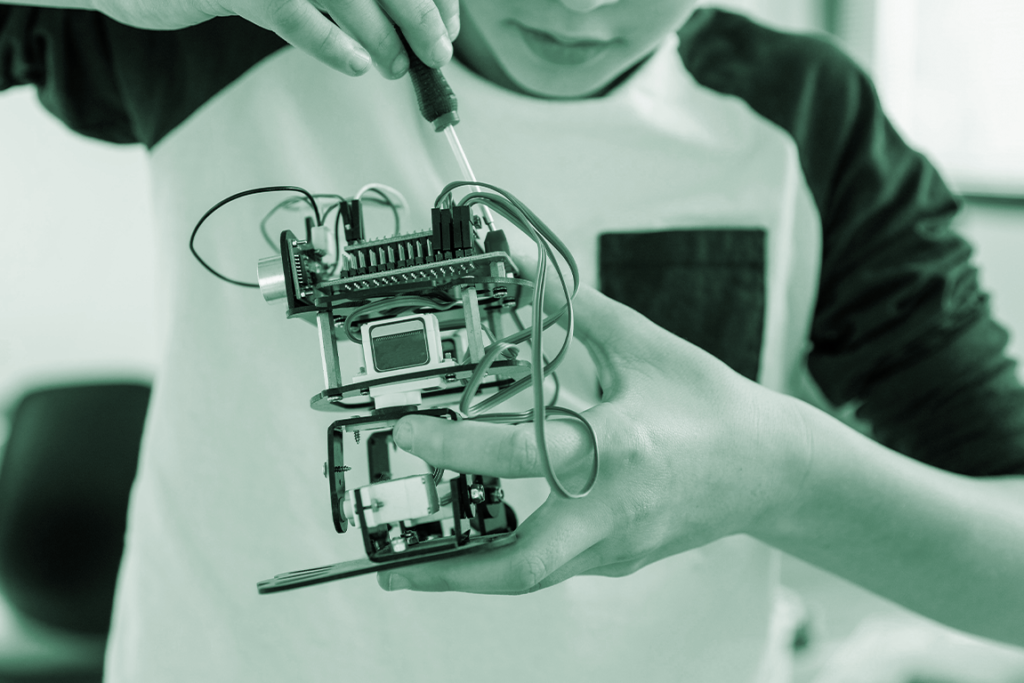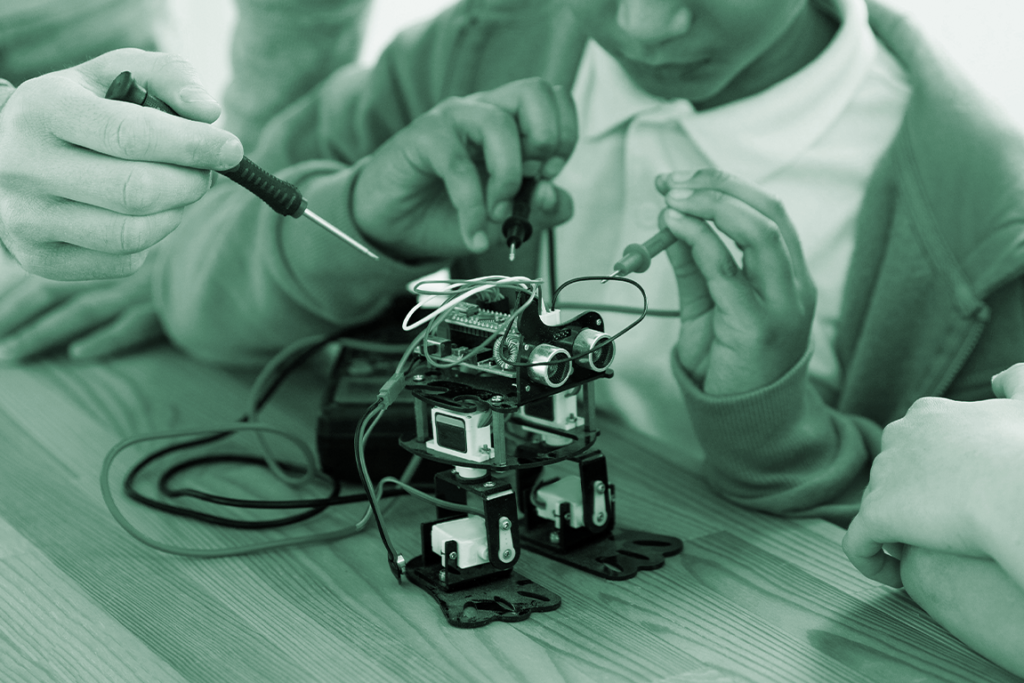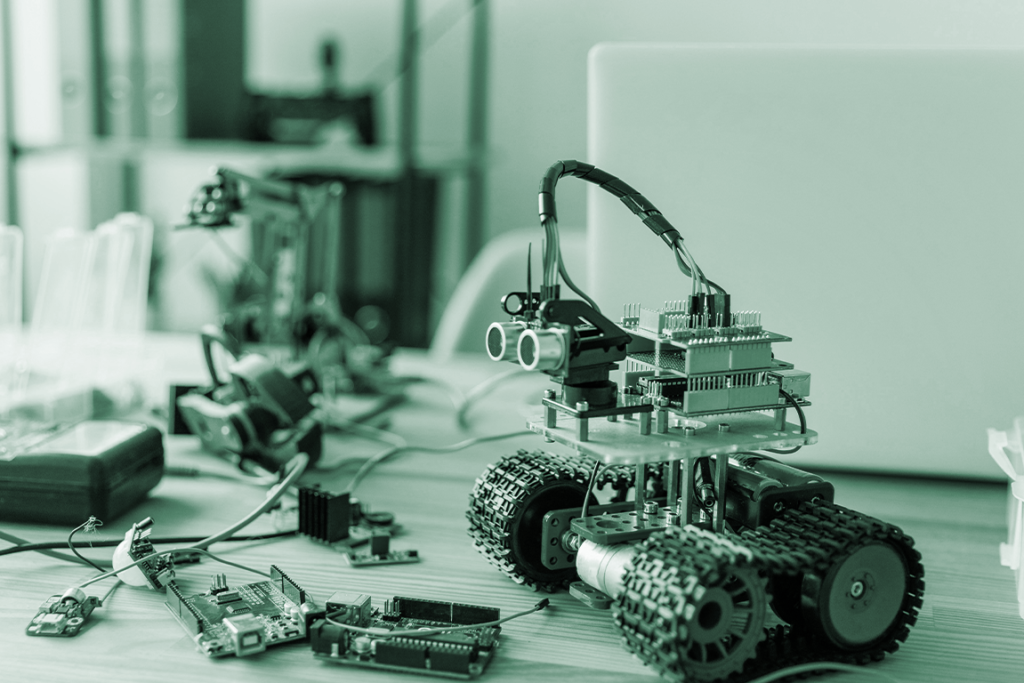Intermediate Course - Level III

About Course
This scope and sequence is a great place to understand more in detail about robotics, computer vision and artificial intelligence in the PRANITI Lab as it gives students an introduction to learning engineering. Along the way, you will be introduced to many of the key resources and materials Shaikshya Kala offers.
Each week gives guidance for what teachers can do before, during, and after class in order to learn the basics of teaching building with the curricular resources. The after class suggestions can be used as discussion prompts, journal entries, assessments or classroom documentation.
16 Week Scope and Sequence
Introduce and recap the students to Robotics, Computer Vision, and Artificial Intelligence. Give students hands-on experience with a simple build, help them get to know the components and experiment with the running of the different kits.
Introduce the mathematical concepts behind modern robotics; configuration space, rigid-body motions.
Introduce the mathematical concepts behind modern robotics; forward kinematics, velocity kinematics and statics, robot control theory.
Help students understand the limitations of real world objects like the hardware, sensors, electronic components, cameras, and learn how this introduces a high degree of uncertainty and how tackle such problems with Kalman filtering.
Students are tasked with completing a mini project utilizing the knowledge they have gained from the previous weeks and display a certain level of technical expertise. Students can choose from a plethora of projects given by the instructor or choose a relevant topic and pave their way into modern problem solving.
Introduce concepts of state-space modeling, and strategies for path planning with various classical, graph search, heuristic search and modern search algorithms.
Students are tasked with completing a mini project utilizing the knowledge they have gained from the previous weeks and display a certain level of technical expertise. Students can choose from a plethora of projects given by the instructor or choose a relevant topic and pave their way into modern problem solving.
Introduce the concept of images as two-dimensional signals, provide an intuition of the wealth of information hidden in low-level information and introduce basic convolution and threshold-based image processing algorithms.
Introduce the notion of features, and understand standard feature detectors such as Hough transform to detect lines, circles and other shapes, numerical methods such as least-squares, split-and-merge and RANSAC to find high-level features in noisy data, and scale-invariant features (SIFT).
Students are tasked with completing a mini project utilizing the knowledge they have gained from the previous weeks and display a certain level of technical expertise. Students can choose from a plethora of projects given by the instructor or choose a relevant topic and pave their way into modern problem solving.
Students learn how to estimate the robot’s location and that of landmarks in the map at the same time (simultaneous localization and mapping, or SLAM). SLAM provides the foundation for a robot to be transported to an unknown location and being able to explore the area and build metrically accurate maps and pose estimates through onboard sensing alone. This could be useful for any field robot, whether terrestrial, extraterrestrial, under the ocean or in an unexplored built environment.
Students are tasked with completing a mini project utilizing the knowledge they have gained from the previous weeks and display a certain level of technical expertise. Students can choose from a plethora of projects given by the instructor or choose a relevant topic and pave their way into modern problem solving.
Introduce students to key computational components of deep learning systems and lay the groundwork for subsequent implementations of more complex learning models.
Students are tasked with completing a mini project utilizing the knowledge they have gained from the previous weeks and display a certain level of technical expertise. Students can choose from a plethora of projects given by the instructor or choose a relevant topic and pave their way into modern problem solving.
Provide the students with the background knowledge necessary for understanding the ethical dilemmas that arise in AI. Help create AI solutions, practices and improved benchmarking within industry and focus on a range of processes ranging from cooperation between these actors. Discourse and discussions to predict and bring an unbiased outlook towards Robotics and AI development.
Students present their work and assess their peers which introduces different approaches to thinking. Students learn how to improve communication skills by presenting and demonstrating their knowledge to others.
Help students who need a little push to finish their course program.
Material Includes
- Raspberry Pi
- Nvidia Jetson Nano
- Robot and Drone Kit
- Pixhawk Flight Controllers
- Various Sensor Camera Systems
- Testing & Measuring Systems
- 3D Printer
- Bring computer, provided if needed in-class.
- Reference Notes & Books
Benefits
- Maximum teacher-student ratio of 1:20
- Twice a week office hours, two 1-hr sessions per week for clarifications & catching up
- Grading Rubrics
- Certificate of Completion
Prerequisites
- Significant coding experience preferred
- Advanced Calculus & Algebra knowledge
- Advanced Design Logic
- Curiosity & Excitement for New Information

